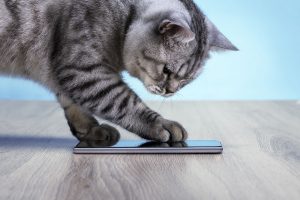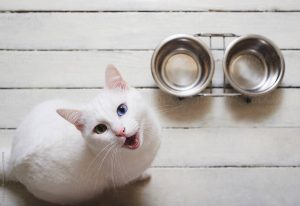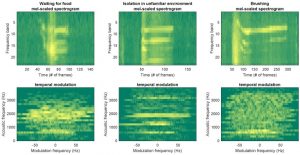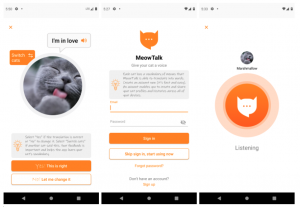Meow: ‘Purrfecting’ the Comprehension of Cat Communication
Written by: Anisha Kolambe

Source: New York Post
While dogs are typically referred to as ‘man’s best friend’, cats also have their own special significance in the history of human civilization. Revered by the ancient Egyptians, murdering a cat was equivalent to a death sentence, with further evidence of this respect corroborated by a cat cemetery in Beni-Hassan, complete with 300,000 cat mummies (Zax, 2007). The domestication of cats can be traced back to 12,000 years ago in the Near East, stemming from the Middle Eastern wildcat Felis silvestris (Zax, 2007). While dogs were productive in hunting down prey, the birth of the first agricultural societies warranted the need for cats in protecting surplus crops from rodents, initiating the mutualistic relationship between humans and their feline friends. Today, cats are one of the most popular household animals, with 373 million living as pets across the world (Mala, 2020). As society’s fascination with cats continues to grow, so does the desire to understand the language of these animal friends, furthering advancements in the fields of behavior and technology.
The Meow Language
Ancestral cats lived alone, meaning that they rarely came in contact with other members of their species. This lack of correspondence resulted in the lack of vocal cues between cats, who instead relied on other methods of communication (primarily olfaction; the sense of smell) to reduce confrontation. These same principles still hold true for today’s cats. Cats meow as kittens to indicate a state of need, such as food or warmth, to the parent safeguarding them (Whitcomb, 2020). However, by adulthood cats naturally outgrow this behavior. Feral cats, for instance, are more prone to use vocalizations such as hissing or growling rather than meowing. If a feral does meow, the action is indiscriminate to the subject being a person, another animal, or inanimate object (Whitcomb, 2020). This observation indicates that cats are not naturally partial towards people.
In comparison to strays, house cats meow both more frequently and specifically at human beings, indicating that vocalization is a learned behavior stemming from domestication and environment. Since humans are unlikely to perceive and understand pheromones (the primary feline method of communication), cats have evolved to be more expressive in utilizing auditory messages to obtain their owner’s attention. Through variations in tone and length of a meow to generate different meanings, cats have specially developed a language to converse with their human counterparts.
Figure 1

A cat meows as it waits for its owner to serve its food.
Source: Stocksy
A study with Maine Coon and European Shorthair cats was conducted by the University of Milan to determine whether consistent patterns were exhibited during meows. Furthermore, this study also aimed to test an AI framework’s accuracy in classifying the context of these meows in three different settings: the wait for food, isolation in a new environment, and brushing (Ntalampiras et al., 2019). Bluetooth microphones were attached to cat collars to capture the spectral signature (a visualization of sound frequencies representing the distribution of energy over time) of the cat’s vocalization. During data collection, the cats were subject to the various actions for a maximum of five minutes, with recordings taken during this time frame. The meow sound recordings were then isolated with preceding and ending segments of 0.5 seconds of silence. The final data set consisted of 448 files with the average time being 1.82 seconds (Ntalampiras et al., 2019).
Figure 2

Representations of the meows associated with the three classes (food, isolation, brushing) using Mel-scaled spectrograms and temporal modulation.
Source: PubMed (Ntalampiras et al., 2019)
Reflecting on the visualization of the sound recordings in Figure 2, clear distinguishable patterns can be observed among the different classes. In the context of food, the mel-scaled spectrogram (a representation of the frequency spectrum of a signal using a perceptual scale of pitch) indicates that the frequency band is clustered around the middle of the time span (60-80 frames) with the frequency in the temporal modulation visualization being somewhat consistent in modulation but clumped around 2000 Hz in acoustic. During isolation, the mel-scaled spectrogram reflects that the frequency band begins at the 50th frame and tapers out into 3 lines (23, 15, and 10) until the 100th frame. Correspondingly, the temporal modulation graph also shows 3-4 distinguishable horizontal lines around 500, 1000, 2000, and 3000 Hz in acoustic, with a slightly less even distribution along modulation frequency. Finally the brushing spectrogram indicates a very strong frequency band along frames 50-75, with a horizontal cluster along a frequency band of 10 until the 300th frame. The temporal modulation is very evenly distributed, with a slight clump along the 500 acoustic frequency from the modulation frequency -50 to 50 Hz. These unique frameworks therefore symbolize that meowing is not random, but rather conveys emotions and messages. Furthermore, the contexts tested are all human induced (cats do not experience ‘waiting for food’, ‘isolation from owners’, or ‘brushing’ in the wild), proving that cats have specifically tailored their vocal language in response to a human environment.
Through the utilization of statistical pattern classification techniques, audio signal processing, and pattern recognition algorithms, an AI framework was developed to categorize sample recordings into one of the three given scenarios. Directed Acyclic Graphs (DAG) were used along with hidden Markov models (HMM) rather than a deep learning algorithm in order to provide higher interpretability along with a more comprehensive scheme generalizing the decision tree. The DAG-HMM model had an accuracy rate of 95.94 percent, with 100 percent accuracy in identifying the wait for food, 95.24 percent accuracy in brushing, and 92.59 percent accuracy for isolation (Ntalampiras et al., 2019). The overall success of the AI in labelling the sound recordings with their associated meanings signifies the potential to derive broader interpretations of the cat language in the near future.
Prospects of Cat Translators
The former Alexa engineer Javier Sanchez (now the technical program manager of Akvelon) is revolutionizing the world with his cat translator app, MeowTalk. This app runs on two models, one being the Google data science model that recognizes a cat’s vocalization and the other being a more specific system designed for each unique cat audio class (Schlossers, 2020). Since cats customize their meow in accordance to their owners, the application utilizes separate profiles rather than a shared generic database to improve the translations individualized for each cat over time. Currently the app has 13 in-built translations including: “feed me”, “I’m angry”, “Mommy”, and more (Criddle, 2020). Users can also create new labels to assign recordings to, improving the prediction accuracy as it familiarizes itself with the individual cat-specific model (Schlosser, 2020). However, this approach is not without its risks. Since the app is dependent on user input, there is a risk of miscommunication in the owner’s own inaccurate interpretation of a cat’s vocalization. With the awareness of these possibilities, users should accept translations with a grain of salt until this promising software is able to achieve higher levels of precision. MeowTalk’s ideal finished product is the creation of a smart-collar that translates a meow into audible human speech.
Figure 3

The different screens of the MeowTalk application.
Source: GeekWire (Schlosser, 2020)
Conclusion
Across history and especially in today’s pandemic context, domesticated cats remain close companions with the human population. These fluffballs have clearly captured humanity’s heart, whether it be by the infinite number of cat videos recommended by the YouTube algorithm or the warmth and comfort provided by their close contact. As cats have adapted to understand the nuances of human nature both in action and words, the advancements of technology now give us the potential to comprehend their own world, ‘pawing’ our way forward in the realm of cat communication.
References and Sources
Criddle, C. (2020, November 18). MeowTalk: Alexa developer’s app to translate Cat’s Miaow. BBC News. Retrieved November 17, 2021, from https://www.bbc.com/news/technology-54991693.
Mala, A. (2020, August 20). Most populous animals on Earth. WorldAtlas. Retrieved November 22, 2021, from https://www.worldatlas.com/articles/most-populous-mammals-on-earth.html.
Magazine, S. (2007, June 30). A brief history of house cats. Smithsonian.com. Retrieved November 17, 2021, from https://www.smithsonianmag.com/history/a-brief-history-of-house-cats-158390681/.
Ntalampiras, S. A., Ludovico, L. A., Presti, G., Prato Previde, E. P., Battini, M., Cannas, S., Palestrini, C., & Mattiello, S. (2019, August 9). Automatic classification of cat vocalizations emitted in different contexts. Animals : an open access journal from MDPI. Retrieved November 17, 2021, from https://www.ncbi.nlm.nih.gov/pmc/articles/PMC6719916/.
Schlosser, K. (2020, November 3). ‘MeowTalk,’ an app that translates cat sounds, is a pet project for this former Alexa Engineer. GeekWire. Retrieved November 17, 2021, from https://www.geekwire.com/2020/meowtalk-app-that-translates-cat-sounds-is-pet-project-for-former-alexa-engineer/.
Whitcomb, I. (2020, November 26). Why do cats meow? LiveScience. Retrieved November 17, 2021, from https://www.livescience.com/why-cats-meow.html.
1 thoughts on “Meow: ‘Purrfecting’ the Comprehension of Cat Communication”